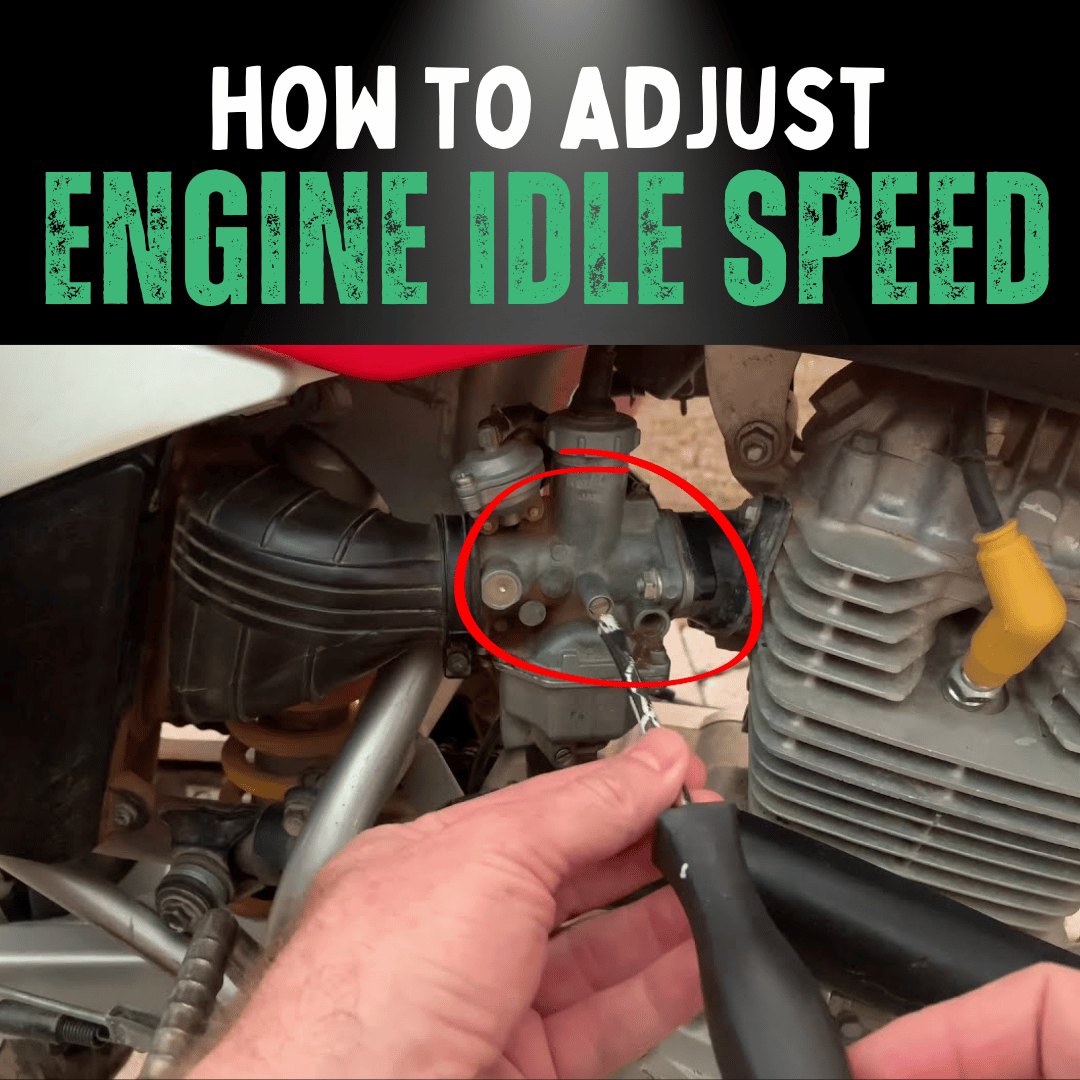
Published: 3 October 2023
Updated: 24 March 2025
Is your motorcycle engine revving too high or too low at idle, making it sound off?
This step-by-step guide will show you how to adjust the engine idle speed for both carbureted and fuel-injected bikes.
Main Steps to Adjust Engine Idle Speed
| Step | Description |
|---|---|
| 1. Check the Manual | Find the recommended idle RPM in your owner’s manual. |
| 2. Locate the Idle Screw | Find the idle screw or knob, usually near the carburetor or engine compartment. |
| 3. Gather Tools | You’ll typically need a Phillips head screwdriver. |
| 4. Adjust Carbureted Bikes | Turn the idle screw clockwise with a screwdriver to increase speed. |
| 5. Adjust Fuel-Injected Bikes | Twist the adjustment knob in the engine compartment to fine-tune. |
| 6. Test the Idle | Start the engine and ensure the idle speed matches the recommended RPM. |
| 7. Fine-Tune | Make further adjustments if the idle speed isn’t correct. |
Step 1: Check Your Owner’s Manual

Your owner’s manual is your go-to resource for the recommended idle RPM, typically 700-1,000 RPM.
Find it or check a digital version online to ensure you’re starting with the right target.
Related: How to Measure RPM on Your Motorcycle
Step 2: Locate the Idle Screw
The idle screw or knob varies by bike model—on carbureted bikes, it’s near the carburetor; on fuel-injected bikes, it’s often a knob in the engine compartment.
Knowing your bike’s layout will make this step easier.
Step 3: Gather Tools

You’ll typically need a Phillips head screwdriver for carbureted bikes, or you may just need to twist a knob for fuel-injected models.
Keep your tools organized to avoid delays during the process.
Safety Precautions

- Work on a stable, level surface using a paddock or center stand.
- Ensure good ventilation to avoid exhaust fume buildup.
- Let the engine cool to avoid burns from hot parts.
- Wear safety glasses, gloves, and closed-toe shoes.
Step 4: Adjust Idle Speed on Carbureted Bikes
Use a Phillips head screwdriver to turn the idle screw clockwise, increasing the idle speed.
Small adjustments (1-2 turns) are usually enough, but larger changes may need 3-4 turns.
Step 5: Adjust Idle Speed on Fuel-Injected Bikes
Locate the adjustment knob in the engine compartment, often on the left or right side.
Twist it clockwise to increase the idle speed, similar to adjusting a volume knob.
Step 6: Test the Idle Speed

Start the engine and let it run for a few minutes, then check if the RPM matches the manual’s recommendation.
The goal is a smooth idle without unnecessary revving.
Step 7: Fine-Tune as Needed
If the idle speed isn’t right, revisit the adjustment steps and tweak until you hit the target RPM.
Common Mistakes to Avoid
- Skipping the Manual: Always use the recommended RPM from your manual, not guesswork.
- Over-Tightening: Turning the screw too much can disrupt RPM or damage the powertrain.
- Not Testing: Test the bike under different conditions to ensure the idle is correct.
Conclusion
Adjusting your motorcycle’s idle speed is a simple task with the right steps, ensuring smooth and safe performance.
Grab your manual, a screwdriver, and get tuning for a better ride!
FAQ’s
What tools do I need to adjust motorcycle idle speed?
A Phillips head screwdriver is usually enough for carbureted bikes; fuel-injected bikes may need a knob adjustment.
Can I adjust idle speed on any motorcycle?
Yes, but the method depends on the fuel system—carbureted bikes use a screw, while fuel-injected bikes use a knob.
What are the risks of incorrect idle speed adjustment?
Improper adjustment can cause low oil pressure, leading to poor performance or engine damage over time.
How often should I adjust my motorcycle’s idle speed?
Check it seasonally or after major engine work, or if you notice performance changes.
What’s the typical idle RPM range for a motorcycle?
Most motorcycles idle between 700-1,000 RPM, but always check your owner’s manual for specifics.
Ready to Ride? 🚀
Loved our 2025 guide on adjusting motorcycle idle speed?
Explore more at RiiRoo.com or chat live with us!






Share:
What RPM Should I Ride My Motorcycle At?
10 GOLDEN Rules: Ensuring Motorcycle Safety in Traffic